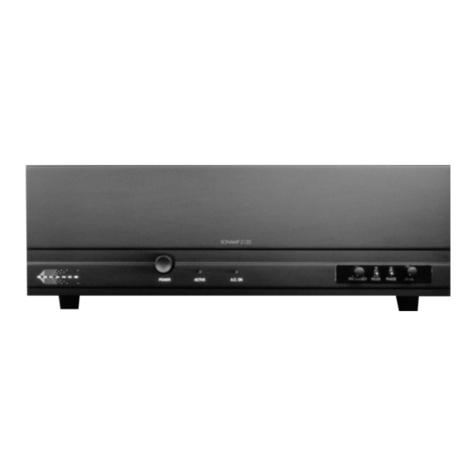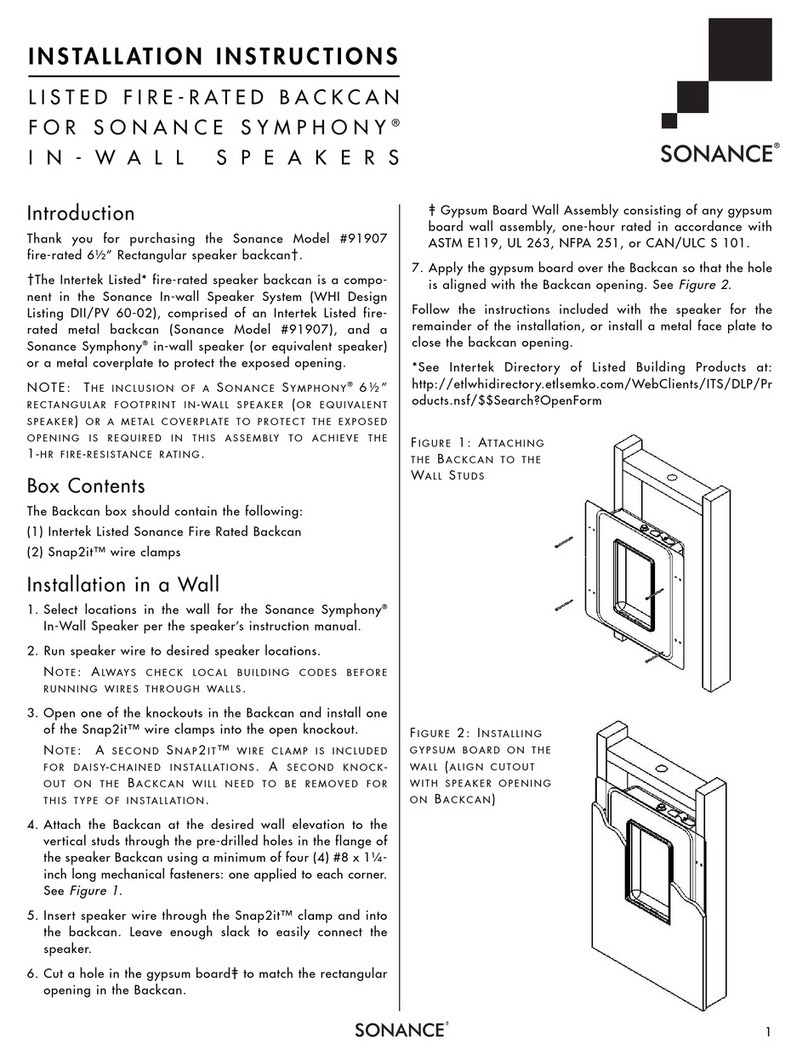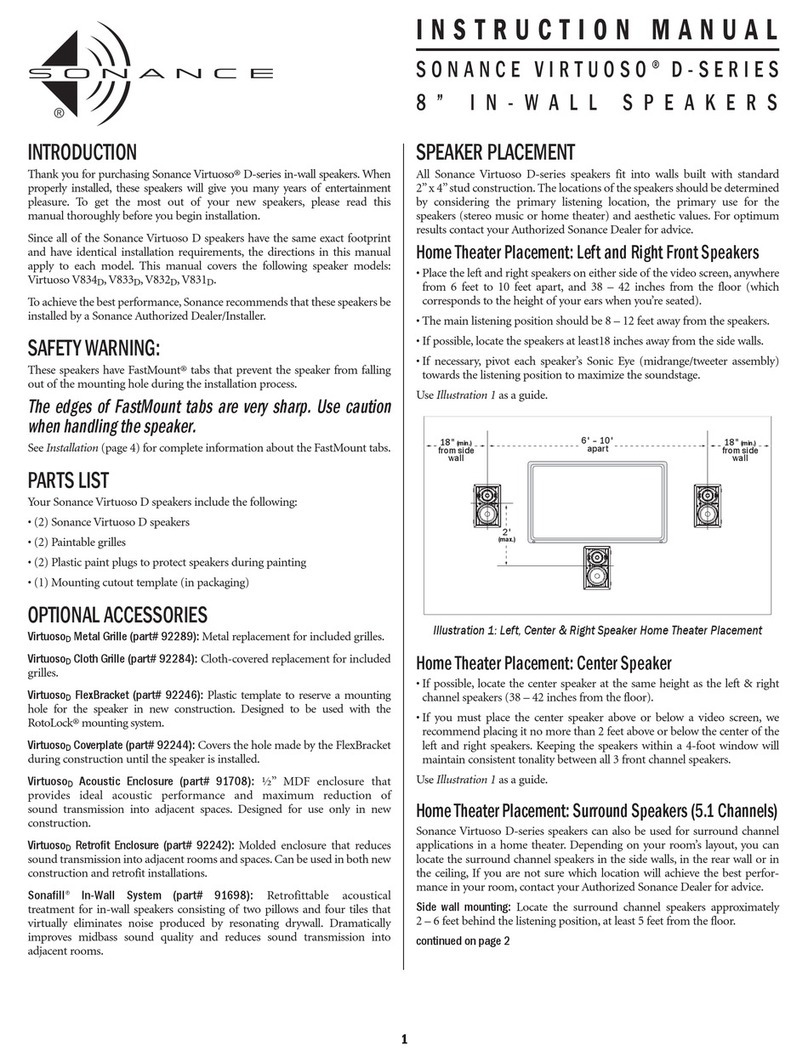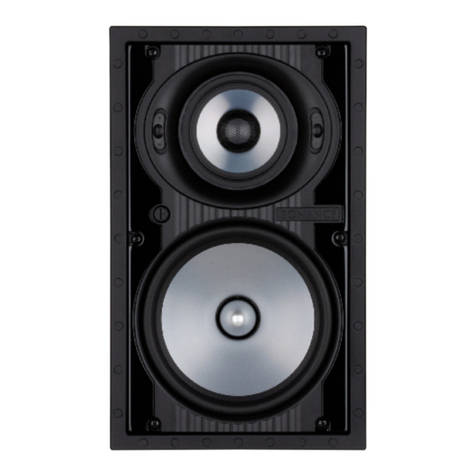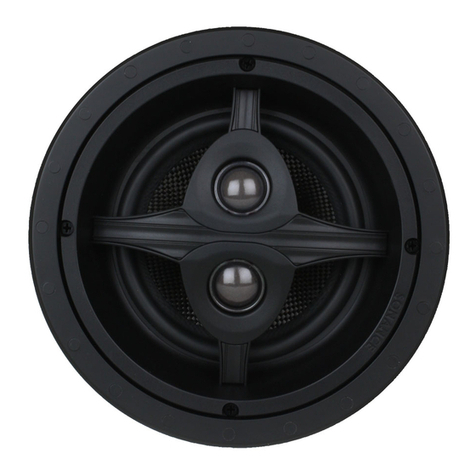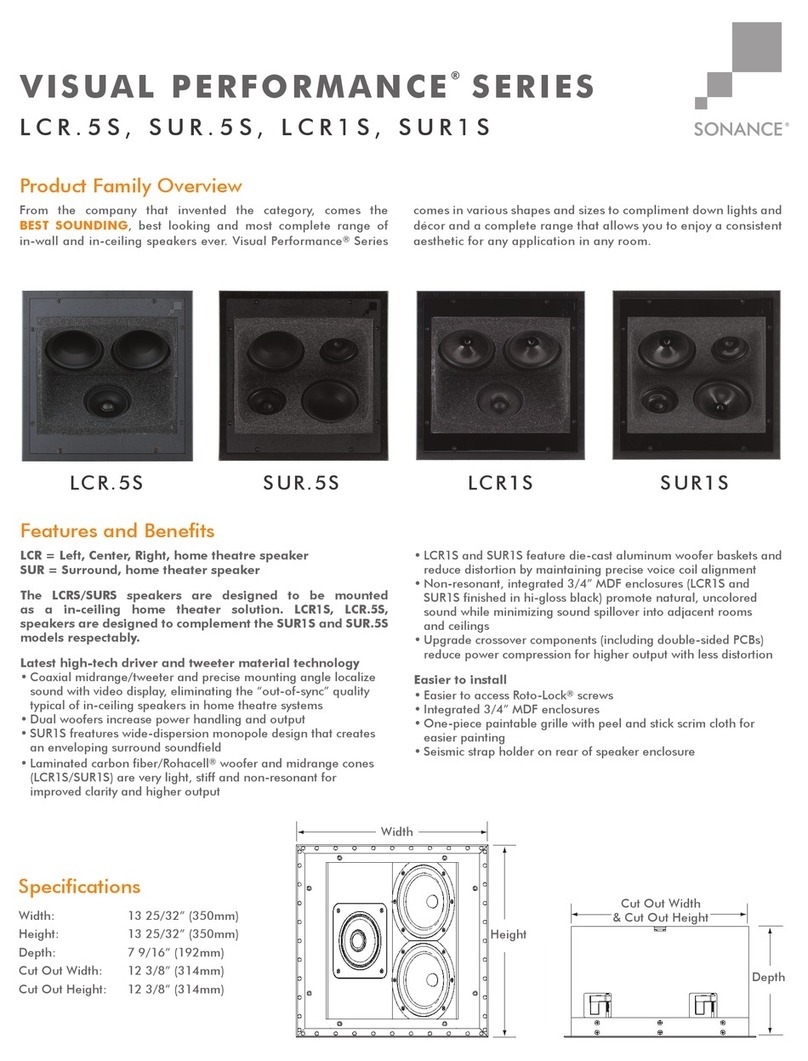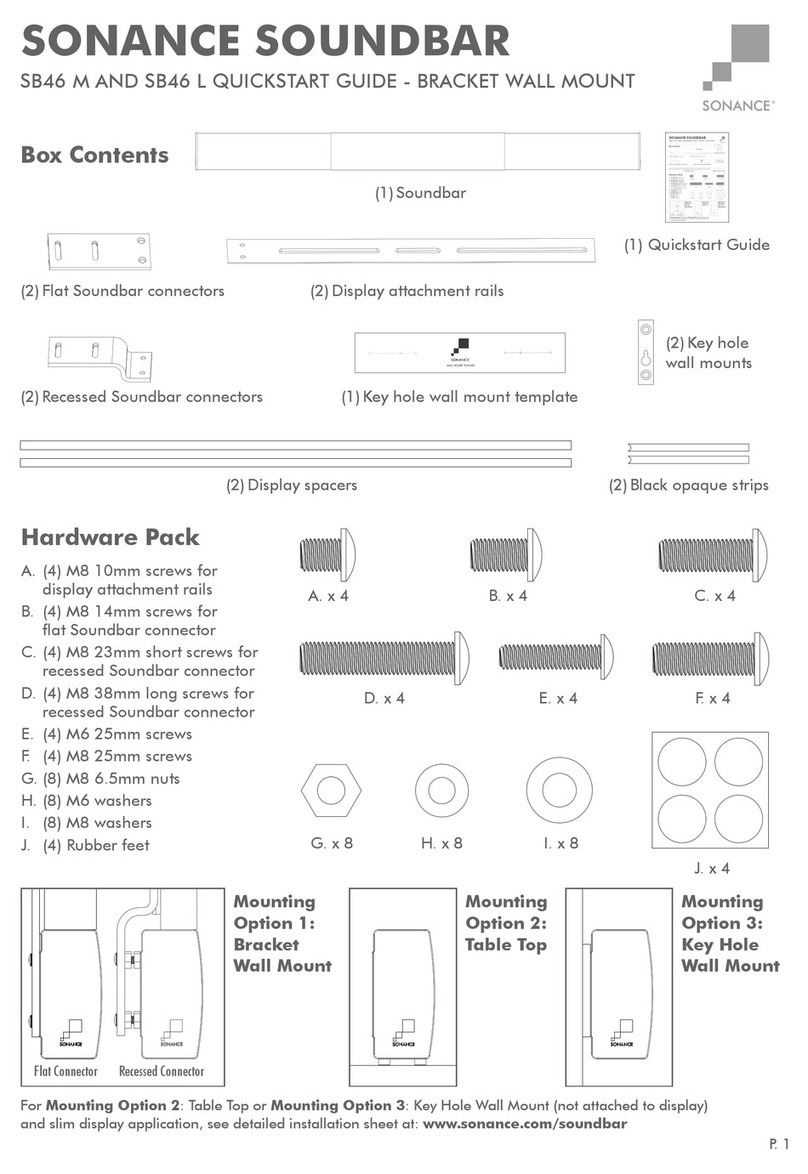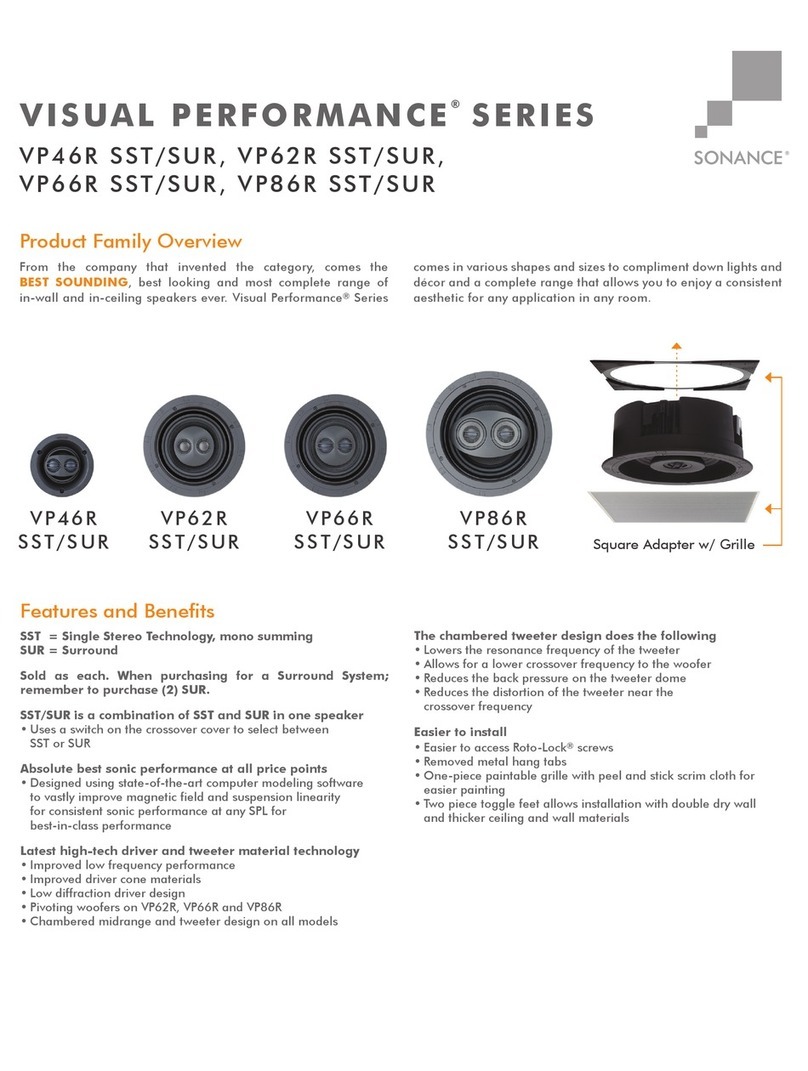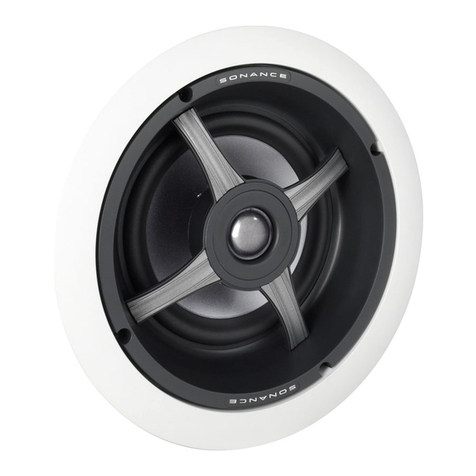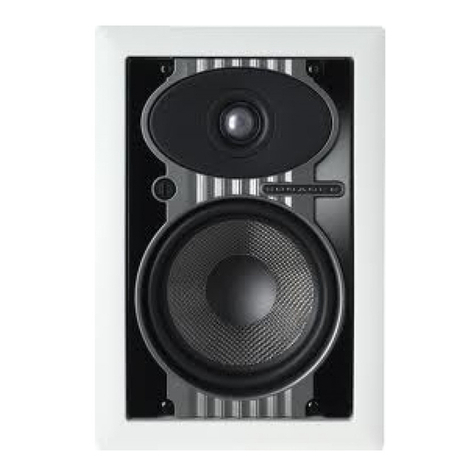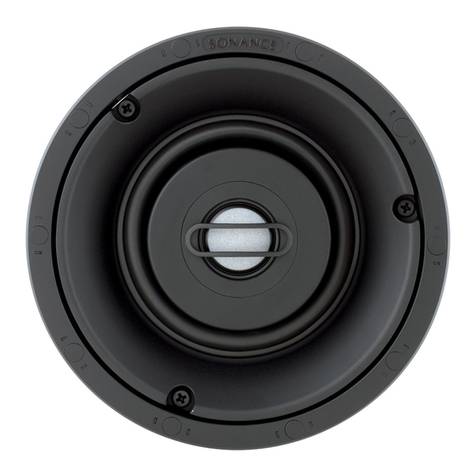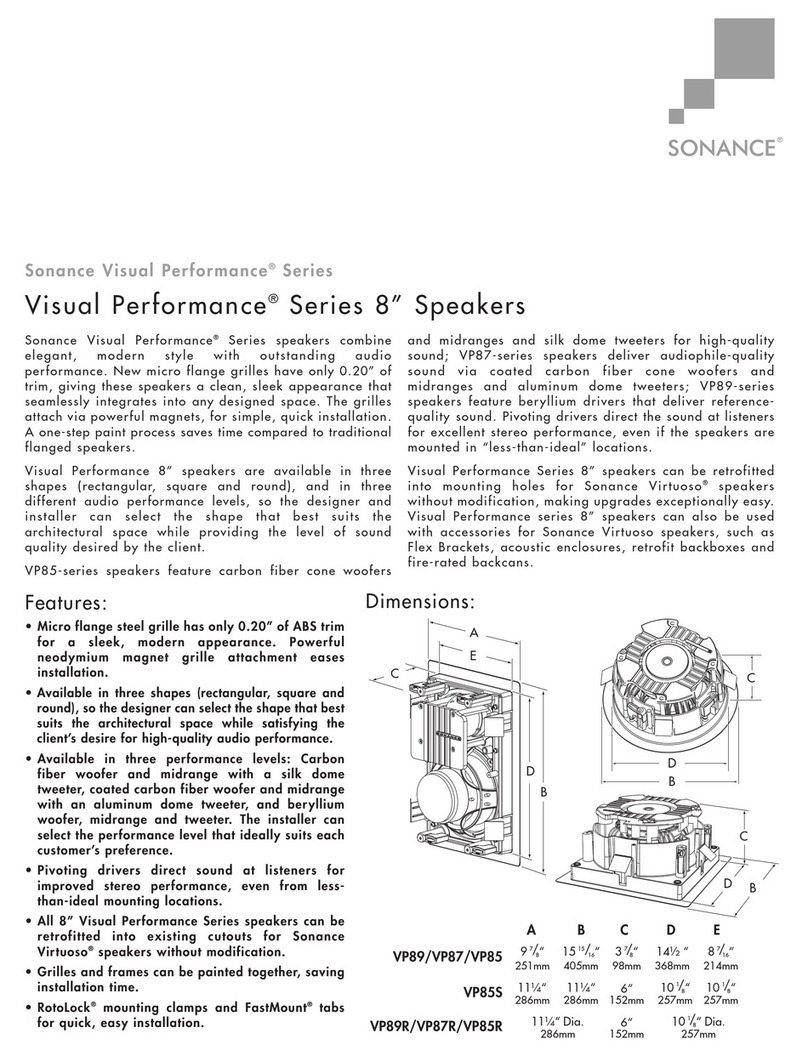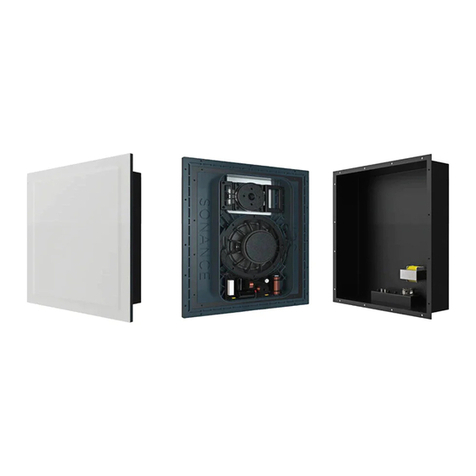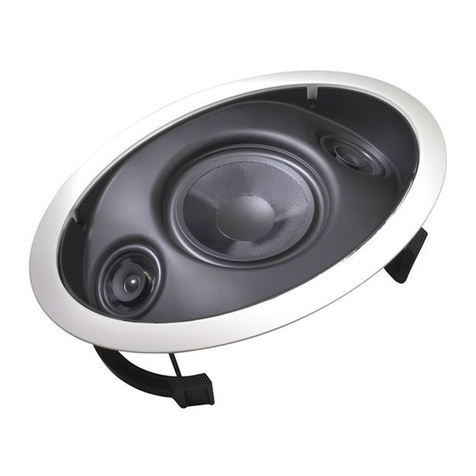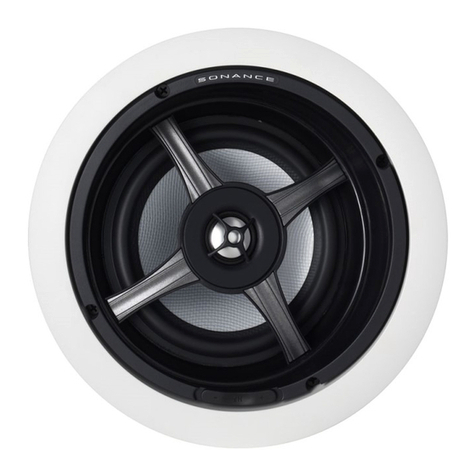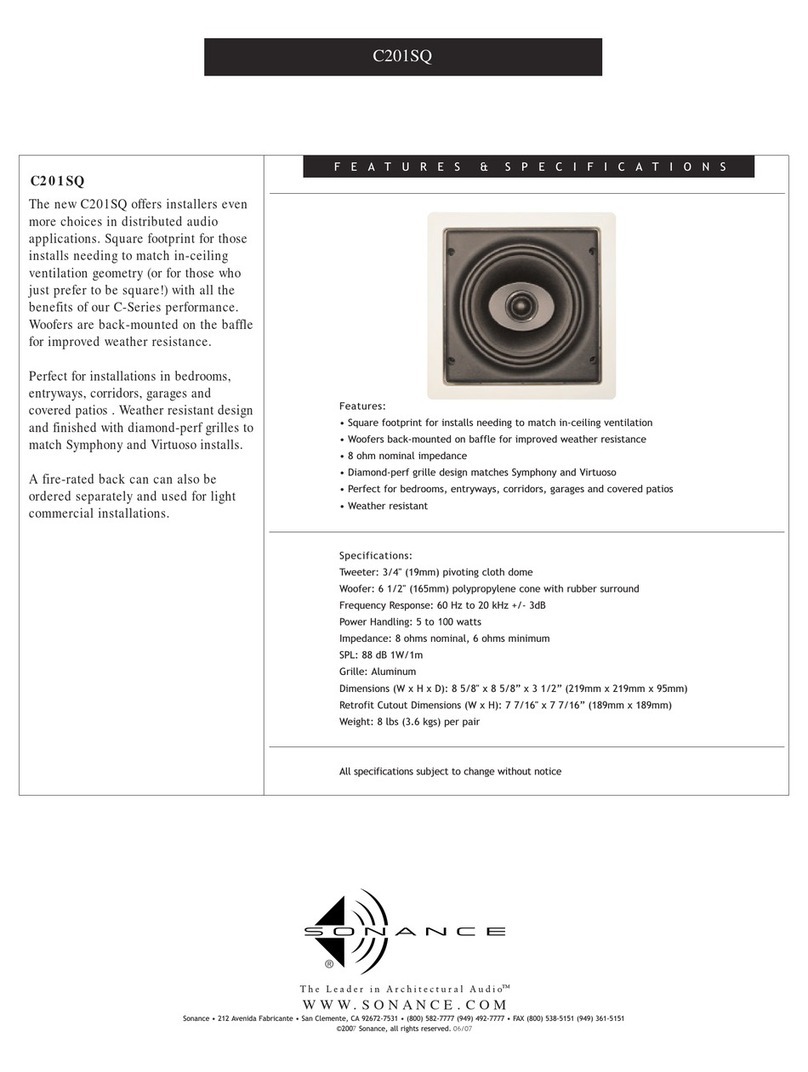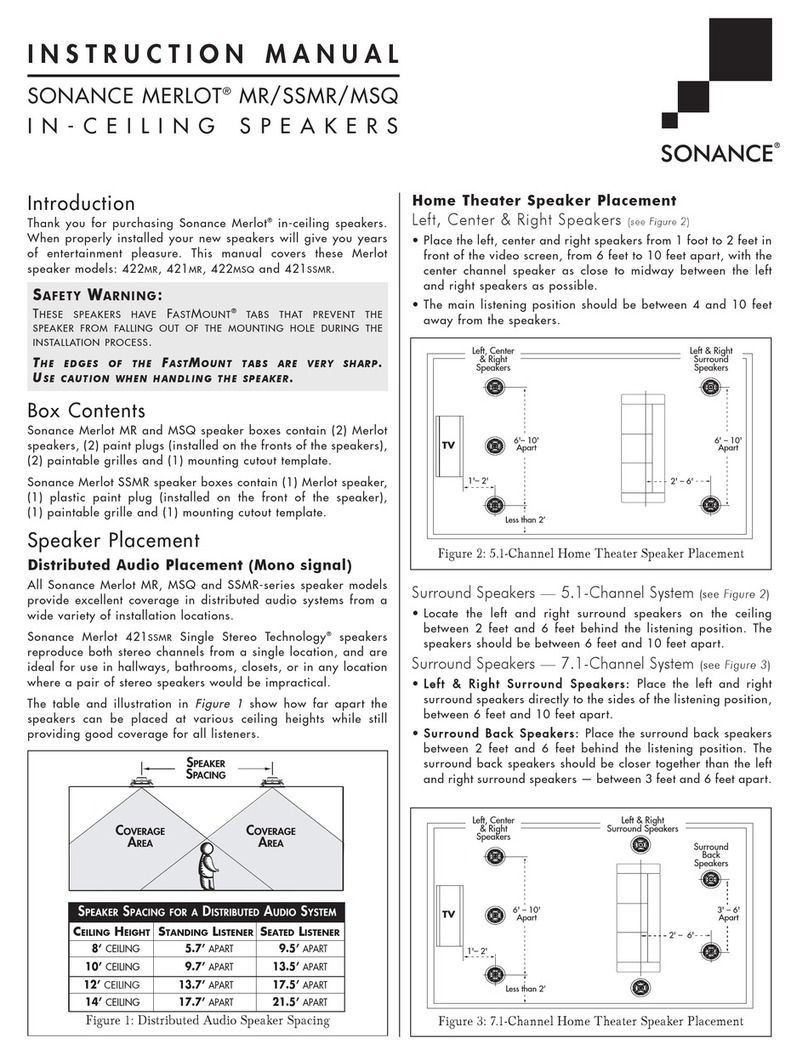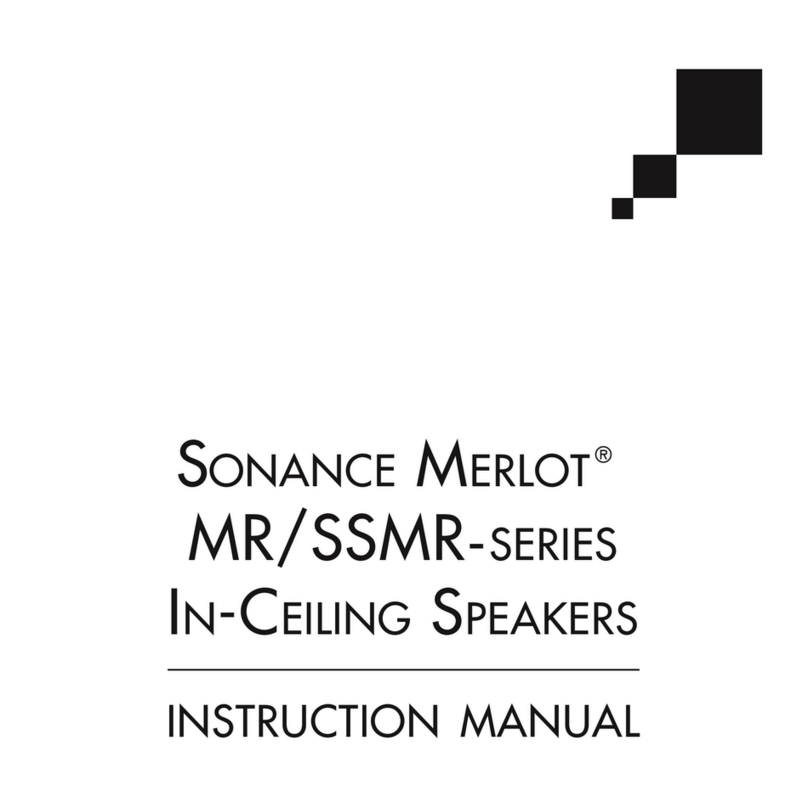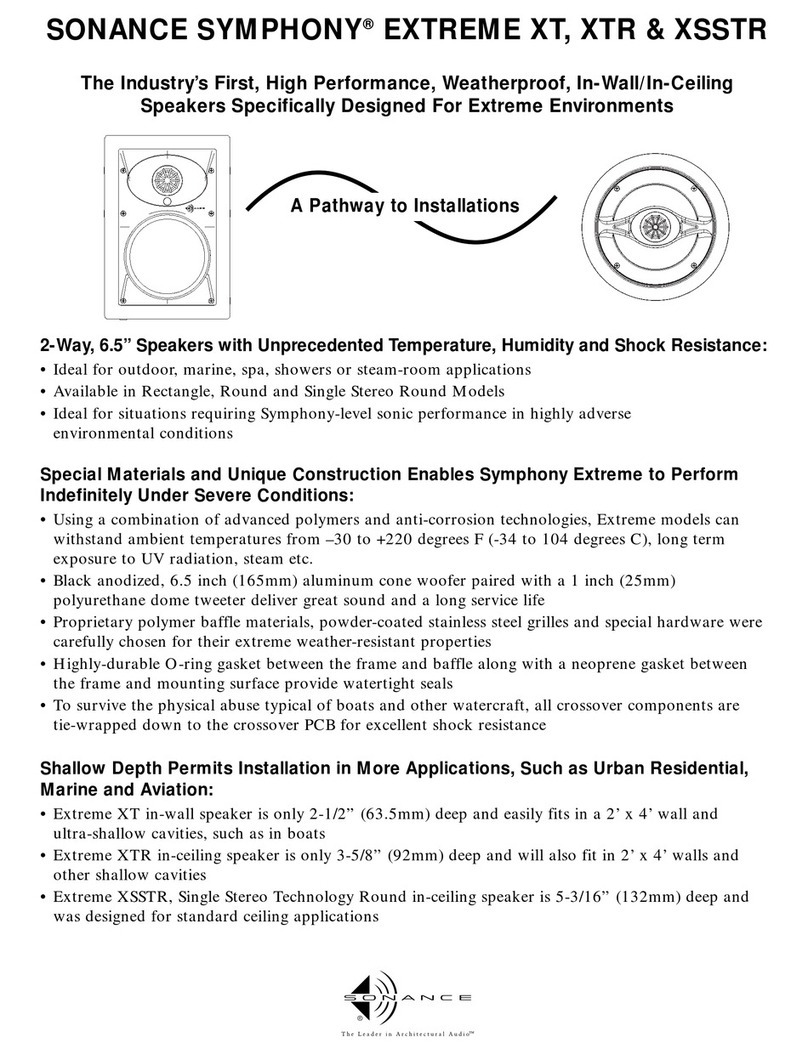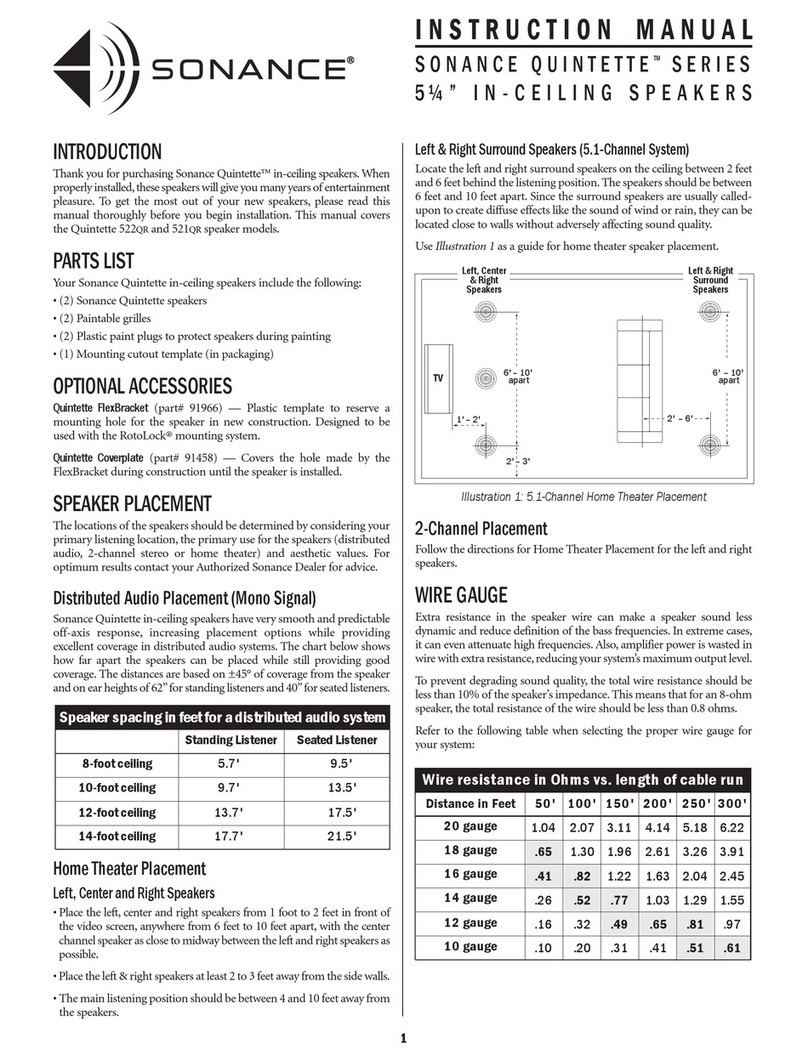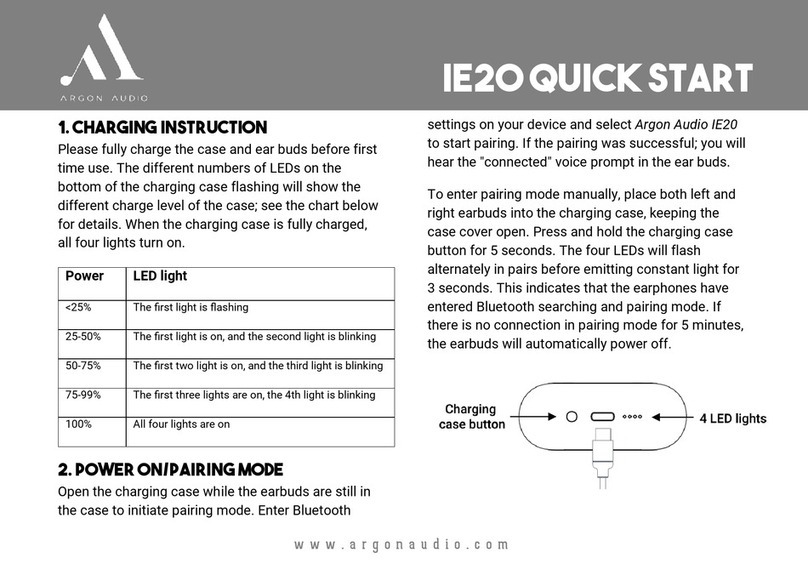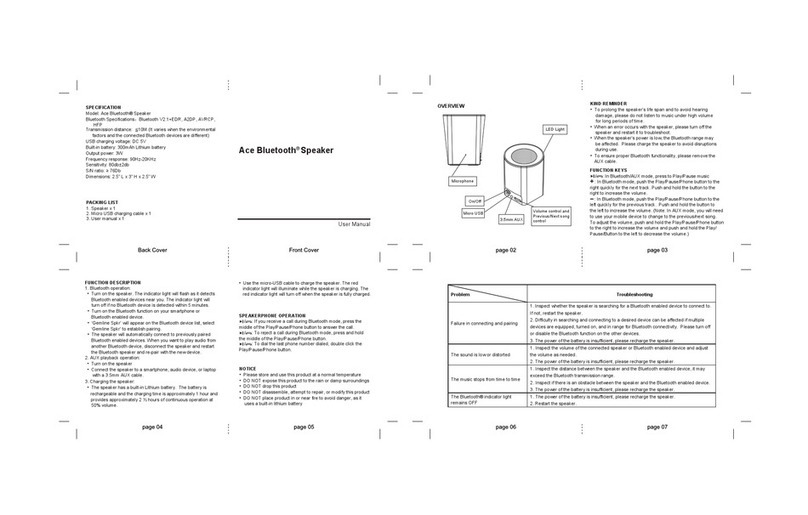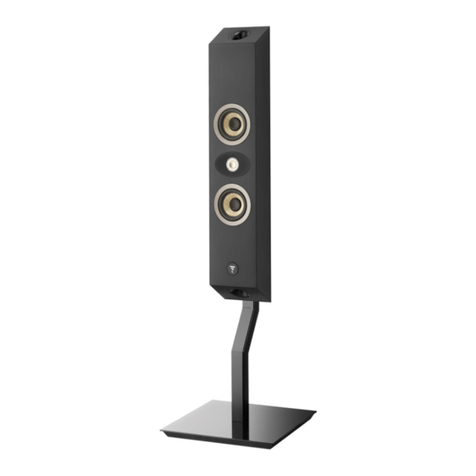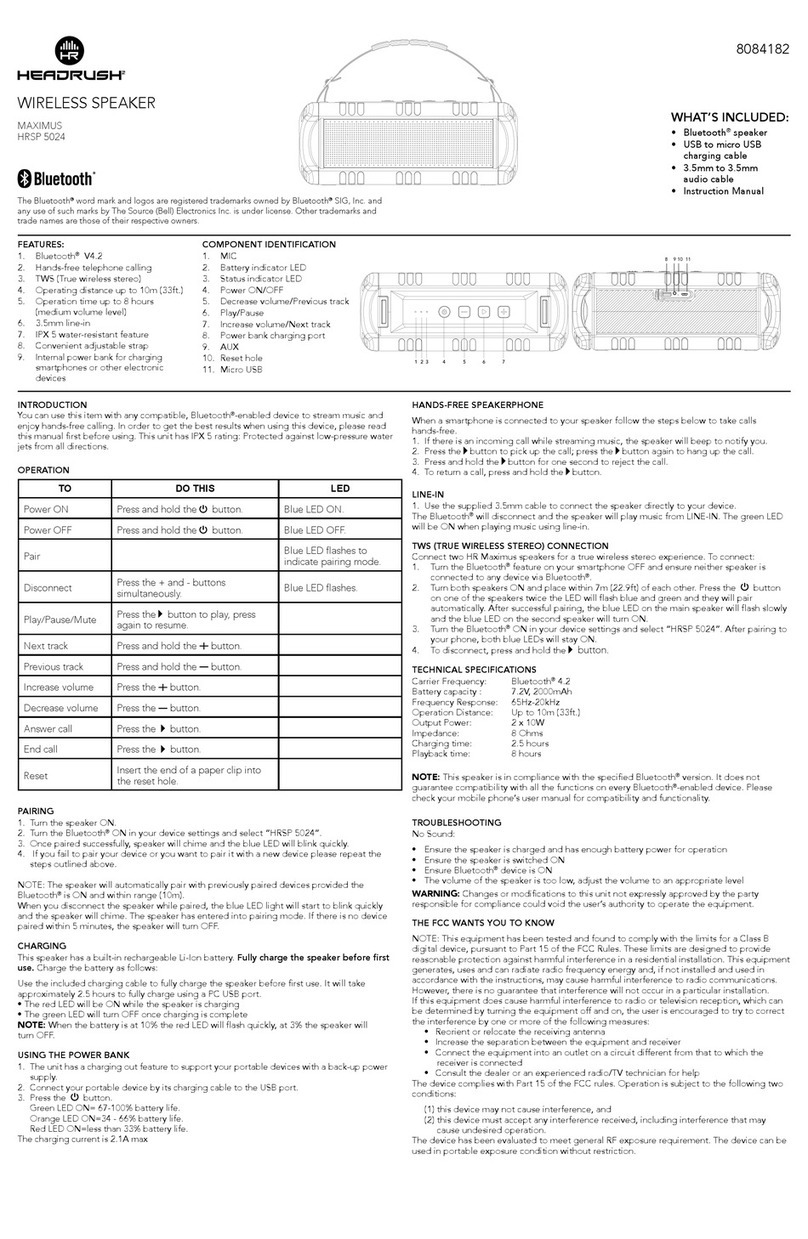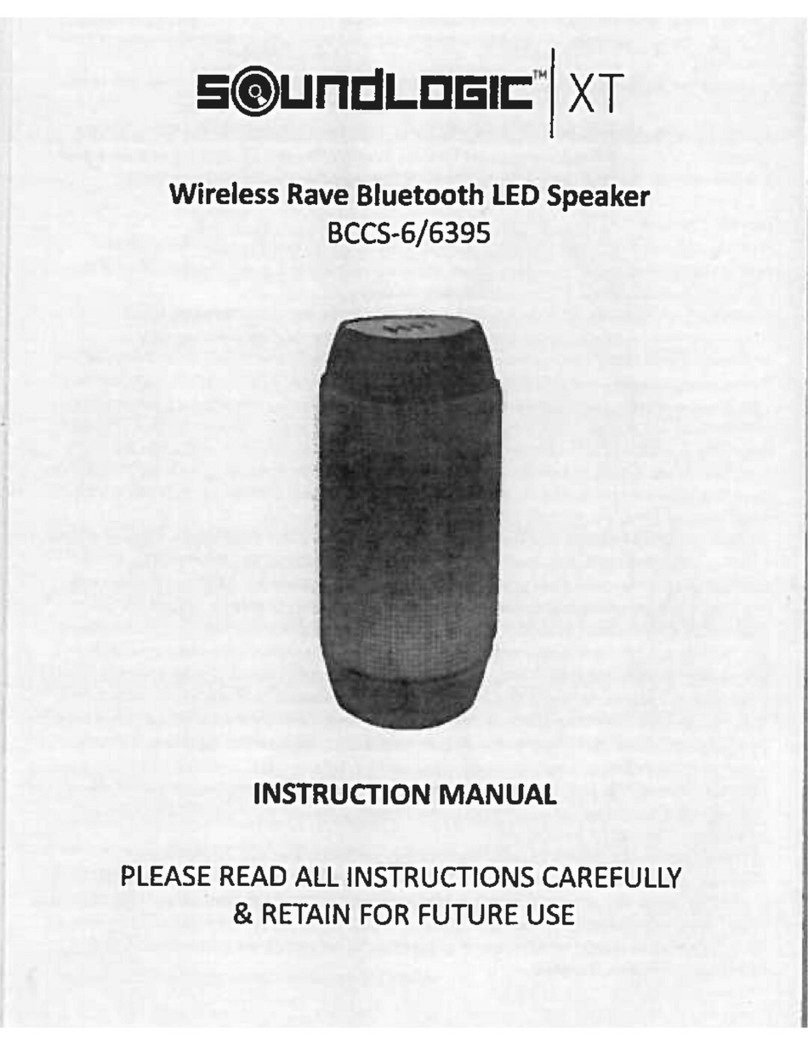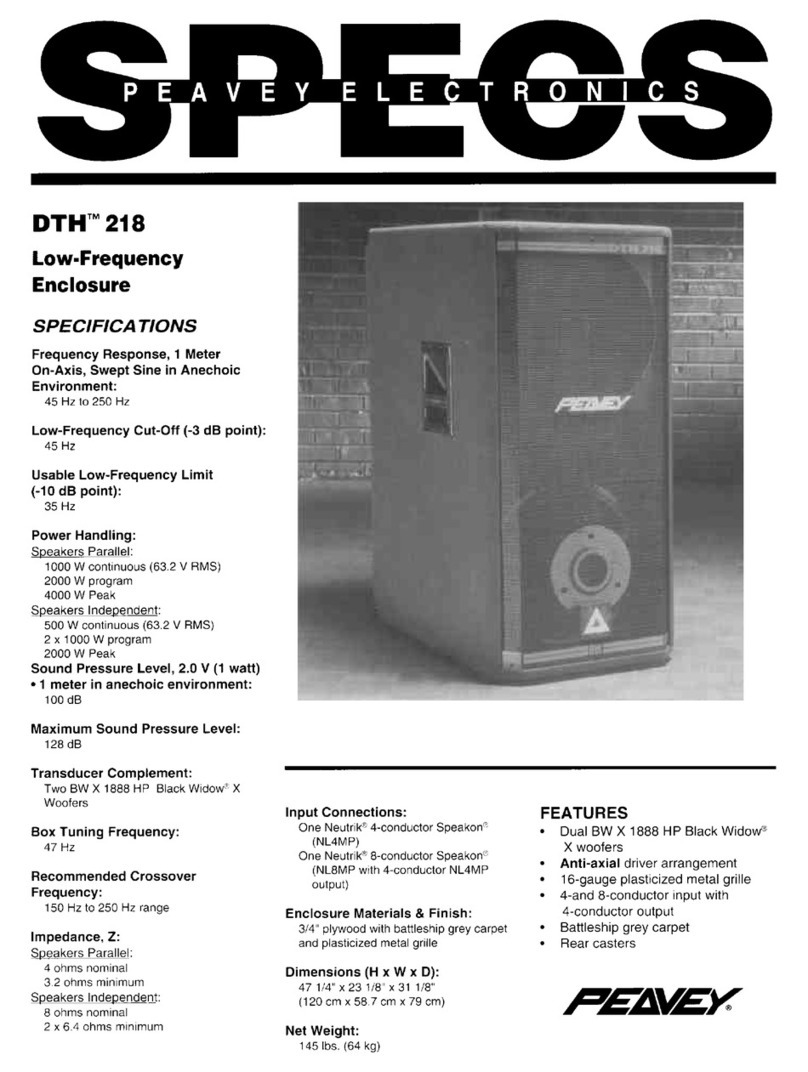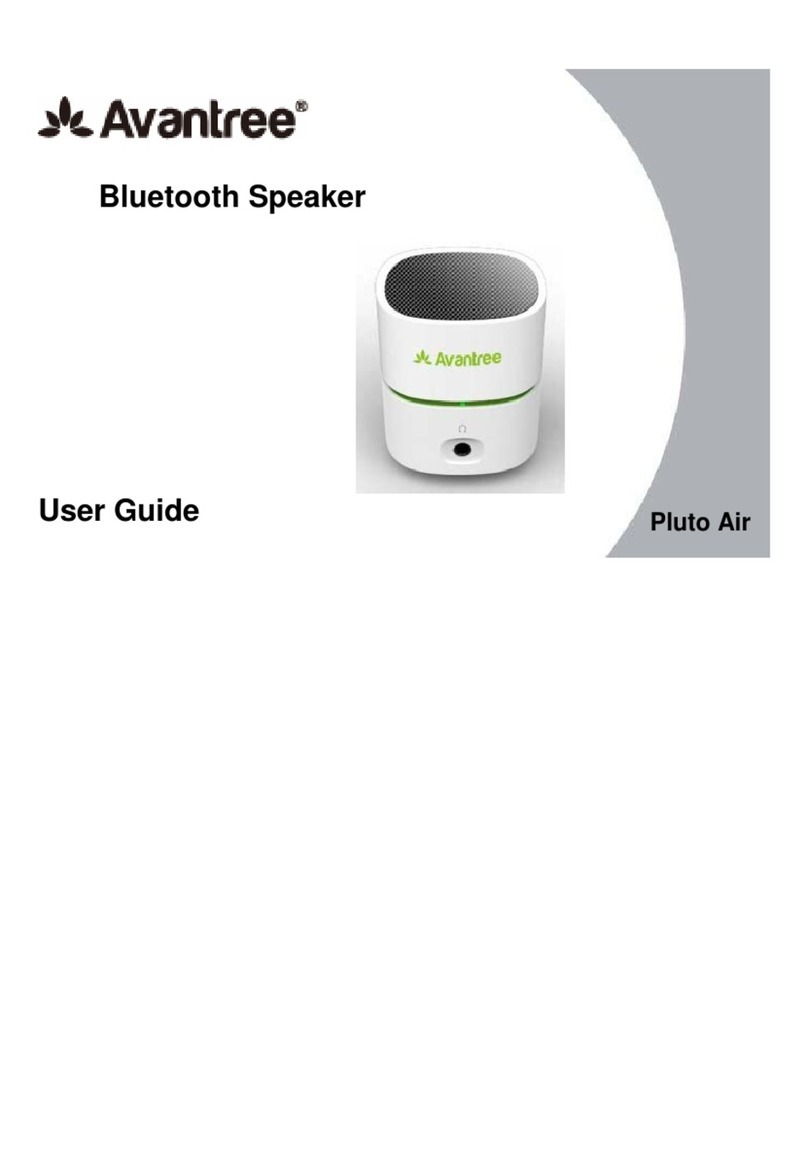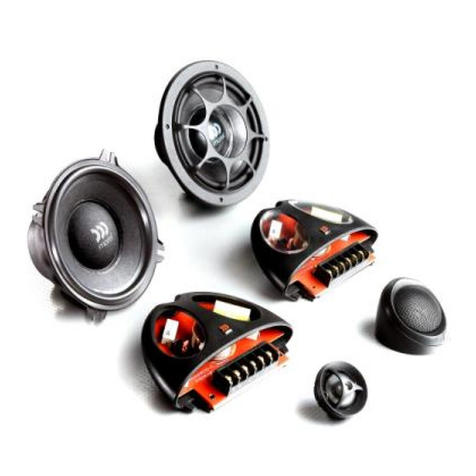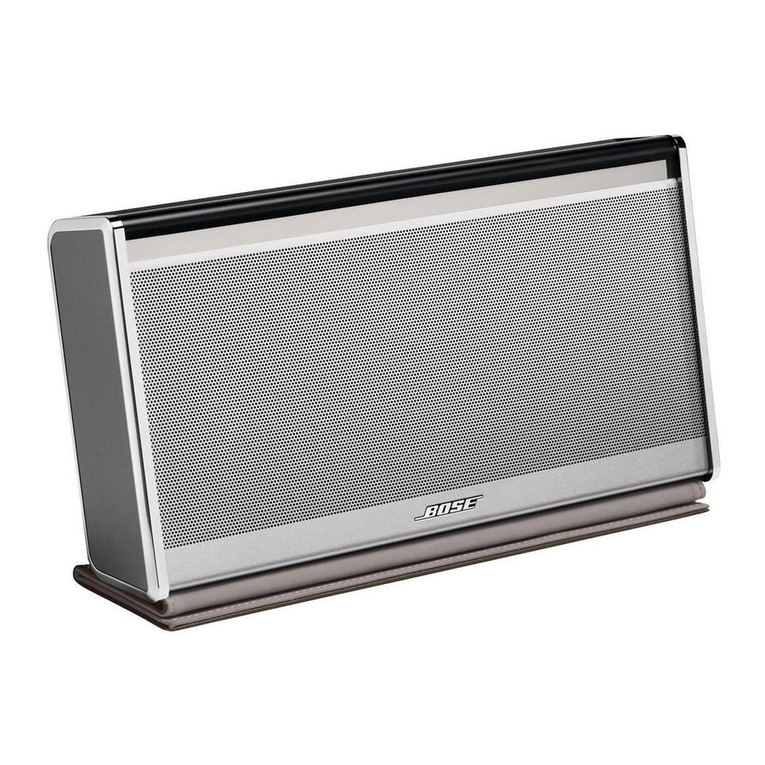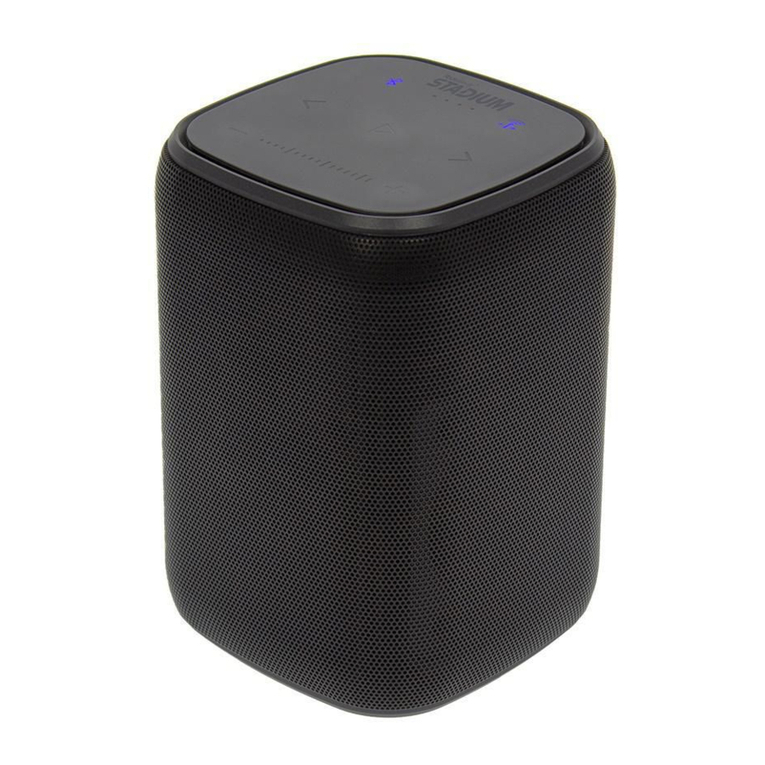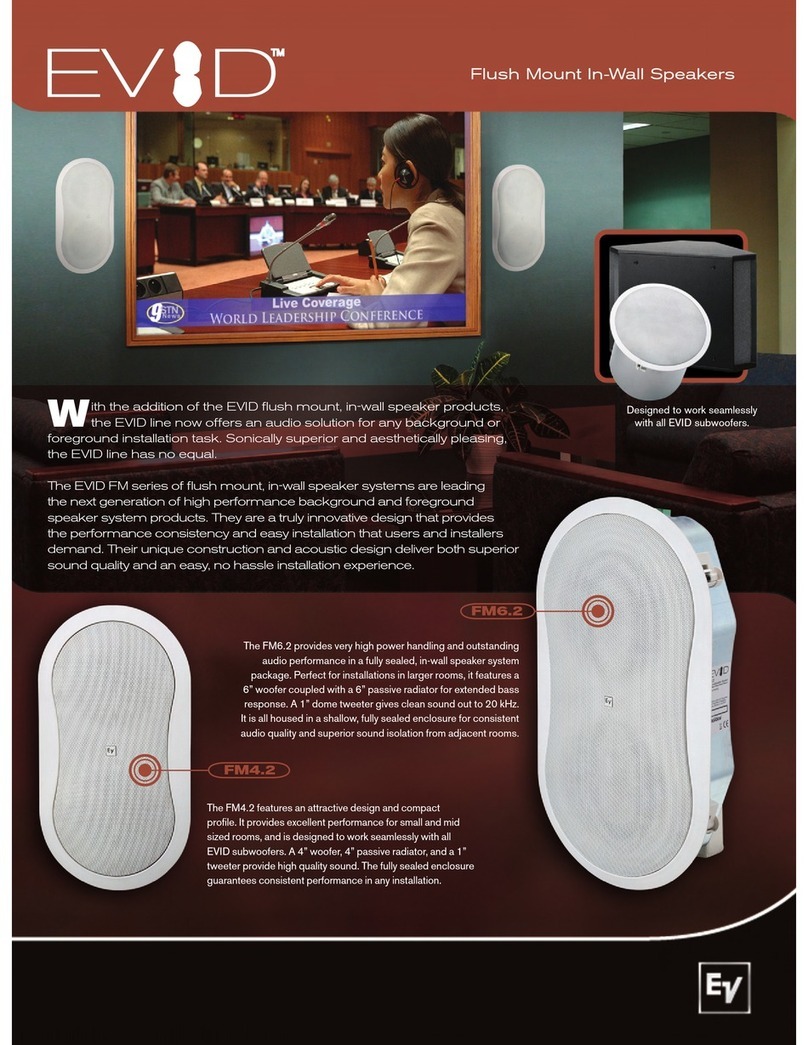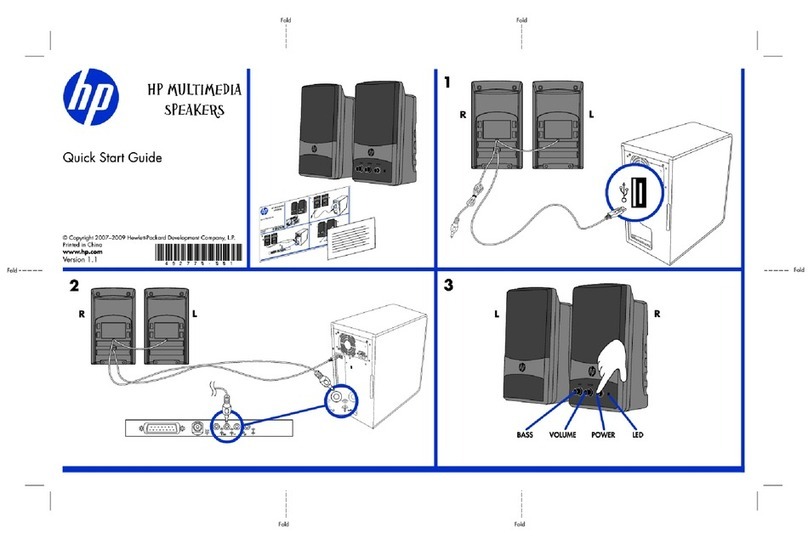
3
SPEAKER PLACEMENT
Sonance Professional Series speakers possess extremely
smooth and predictable off-axis frequency response. The
chart below shows how far apart the speakers can be
placed in a distributed audio system (see Figure 2). The
calculations are based on +/- 45 degrees of coverage from
the speaker, and listener ear heights of 62” for standing
and 40” for seated.
AMPLIFIER SELECTION
When choosing an amplier the maximum number of
speakers and the output level of each speaker must be
known. The sum of the tap settings should never exceed
80% of the amplier’s rated output. For example, if there
are ve speakers and the taps are set at 15 watts, the load
would be 75 watts (5 x 15 watts = 75 watts). To arrive at
the needed power for this number of speakers, simply
divide the total load by 0.8. In this case, 75 / 0.8 = 93.75
watts. Therefore, a standard 100 watt amp would safely
drive this load. To calculate the amount of usable power
an amp offers, simply multiply the rated output by 0.8,
i.e., 100 watts x 0.8 = 80 watts.
The most common wire used on commercial 70 volt
systems is 18 gauge, 2 conductor, stranded, and jacketed
without a shield. The wire starts at the amplier location
and is paralleled at each speaker location. Wire length
using 18 gauge is appropriate up to 700ft with a 100 watt
load. If you double the load (sum of your tap settings),
you will reduce the footage by half, to 350ft. Conversely, if
you halve the load, you may double the acceptable wire
length, i.e., a 50 watt load is safe over 1,400ft of 18 gauge.
Stepping up to 16 gauge wire extends the allowable run
length by approximately 35%. For example, a 100 watt
load can go 700ft on 18 gauge; the same load may be
placed on 1,100ft of 16 gauge.
When using Sonance Professional Series loudspeakers
in an 8 ohm system the total wire resistance should be
less than 10% of the speaker impedance. The speakers
are nominally 8 ohms impedance, so your total wire
resistance should be no more than 8 ohms. In simple
terms, the extra resistance from the wire will have a
very negative affect on the sound quality of the speaker.
The sound can be less dynamic, denition of bass
frequencies can be reduced, and in extreme cases, the
high frequencies can be attenuated. Amplier power is
also wasted in the wire, reducing the maximum output
level of the system. Please refer to the following chart
when deciding on the appropriate wire gauge for your
installation (see Figure 1).
Figure 1: Wire Resistance
Figure 2: Speaker Spacing
WIRE RESISTANCE IN OHMS VS. LENGTH OF CABLE RUN
20 Gauge
50’ 100’ 150’ 200’ 250’ 300’
0.86 1.73 2.59 3.45 4.32 5.18
0.65 1.30 1.94 2.59 3.24 3.89
0.43 0.85 1.28 1.71 2.14 2.56
0.27 0.54 0.81 1.08 1.35 1.62
0.17 0.34 0.51 0.68 0.85 1.02
Distance in Feet
18 Gauge
16 Gauge
14 Gauge
12 Gauge
SPEAKER
SPACING
COVERAGE
AREA
COVERAGE
AREA
Speaker Spacing in Feet for a Distributed Audio System
8-Foot Ceiling 5.7’ (1.7m) Apart
9.7’ (3.0m) Apart
13.7’ (4.2m) Apart
17.7’ (5.4m) Apart
9.5’ (2.9m) Apart
13.5’ (4.1m) Apart
17.5’ (5.3m) Apart
21.5’ (6.6m) Apart
Standing Listener Seated Listener
10-Foot Ceiling
12-Foot Ceiling
14-Foot Ceiling
1. Prime the grille with a metal primer/bonder in
a spray can. Carefully follow the manufacturer’s
directions on the can.
2. We recommend using water-based latex paint on the
grilles. Thin the paint with a proper thinning agent to
a ratio of 1:1 paint-to-thinner, and strain it through a
standard mesh strainer to remove any lumps.
3. Use a small touch-up gun or cap-spray gun with a #3
tip for painting.
• Set the nozzle with a medium to wide fan
• Set the pressure regulator to 60psi
• Lightly spray the front of the grille in three quick
strokes from approximately 10” away
• Let the paint set for one minute, then turn the grille
90º and lightly spray the grille again in three quick
strokes. Repeat this step until all four sides of the
grille have been evenly painted.
4. While the paint is still wet, inspect the grille and
make sure that excess paint has not collected
underneath the grille frame, and that none of the
grille perforations are lled with paint. If any are,
use compressed air to blow the paint out of the
perforations. IMPORTANT: If you nd any grille
perforations that are plugged with paint after the
paint has dried, use a straight pin or sewing needle to
carefully remove the paint.
